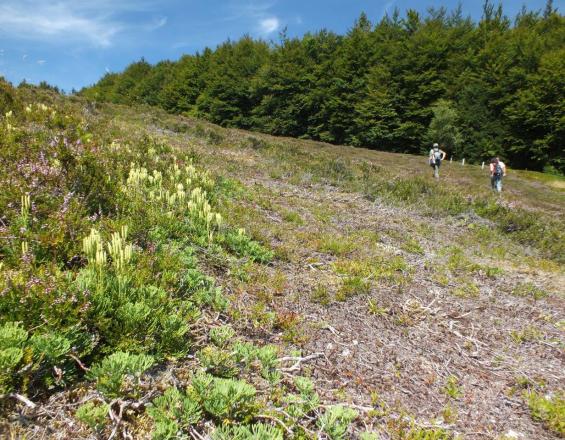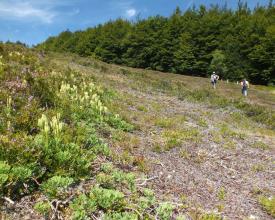
Artificial management of pioneer plant species in a forest context : at the antipodes of natural dynamics.

The main objective of the Hochfeld Managed Biological Reserve (MBR) - differing from Strict Biological Reserves (SBR) - is the conservation of an exceptional population of lycopods (6 taxa). In a dense beech forest, a development in the 1960s resulted in deforestation and even soil stripping. This attack on the forest was followed by the spontaneous reconstitution of a pioneering wild ericaceous heath, which allowed the emergence of lycopods. The conditions could not have been so favorable in the case of a forest cutting, less traumatic for the environment and which would have been followed by a rapid reconstitution of the stand, without any real interruption of the forest vegetation.
There is no pastoral history in the Hochfeld RBD, and the cattle could in any case cause too much damage to the club mosses. We are in a situation where the maintenance of the moor is necessarily done by the combination of mechanization and manual interventions.
Impacts
The combination of techniques makes it possible to effectively conserve the target species. It has the particularity to combine relatively simple mechanized interventions (high mowing), manual actions meticulous or more drastic, when the brushcutter passed very low allows to "regenerate" a pickled environment particularly favorable.
This type of management is an exception to the usual management of Vosgian highlander grasslands (practiced in particular in the MBR of the nearby Champ du Feu), consisting of specific works instead of favoring pastoral management (grazing and mowing) that is less expensive, more conducive to traditional socio-economic activities, and applicable across larger ecological and landscape features. This management of the RBD Hochfeld is interesting and transposable but it is recommended to reserve the same type of very specific issues, in addition to more extensive techniques.

